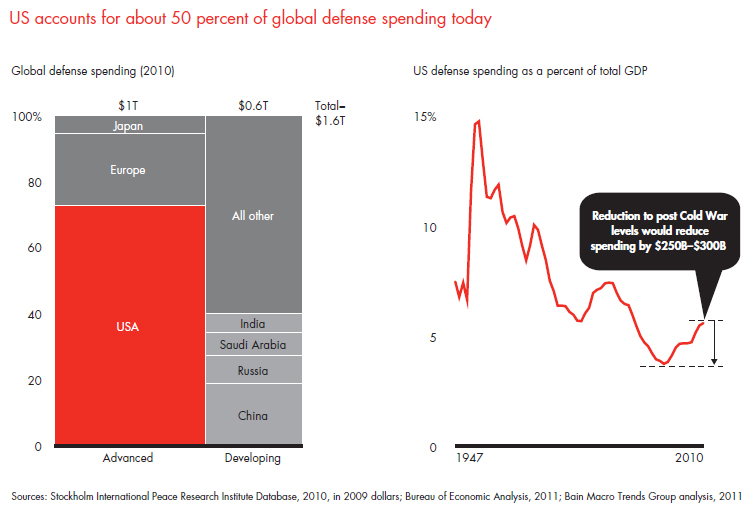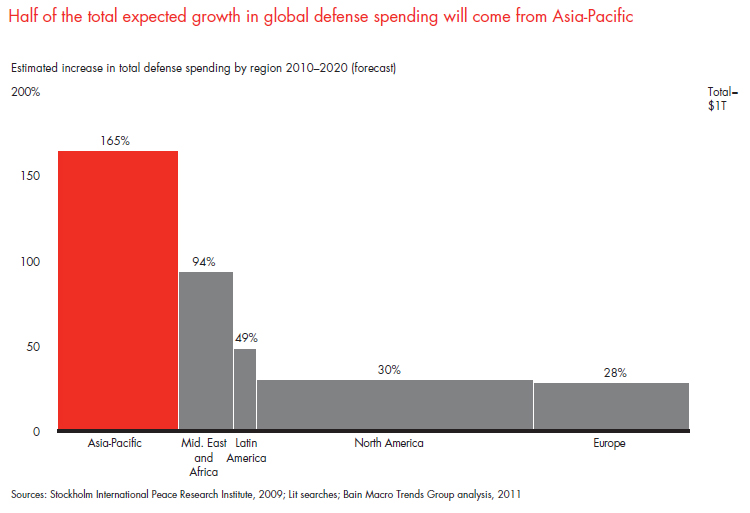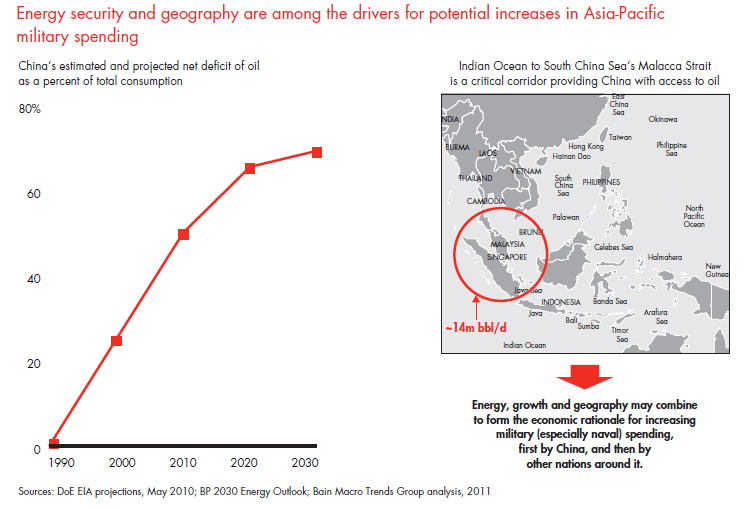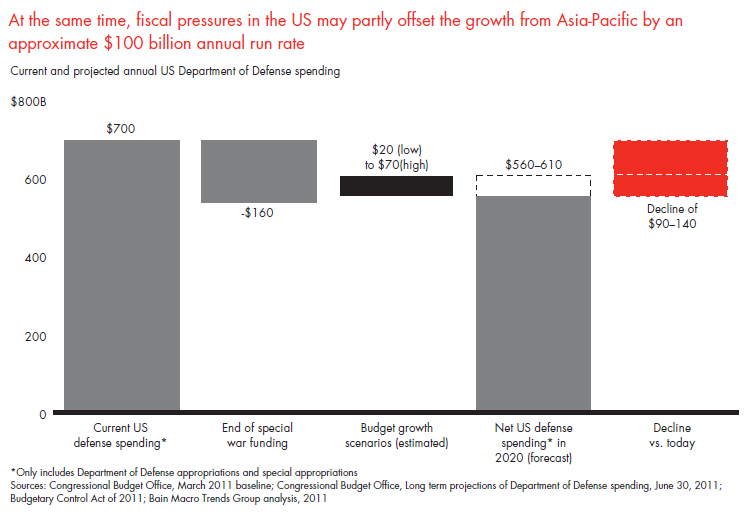Etude
What is behind the trend?
• Because its growth depends on raw material and component imports, China is expanding its military to protect its supply chain.
• China’s spending is prompting spending increases in Japan, India and other countries. Increased military spending creates an elevated risk of local armed conflict in the region. It would be unusual to have an entire decade devoid of any military conflict.
• Historically, the world has relied on the US to patrol the Pacific sea lanes. Local players are increasingly concerned with protecting the Indian Ocean and the South China Sea, though dependence on US for security in the Pacific will remain throughout the decade.
What does it mean for business?
• There will be a transient opportunity for arms-producing nations to sell weapons to developing nations. Total arms sales from the top 100 global defense companies increased 8 percent from 2008 to 2009 to reach $401 billion. Seventy-eight of the top 100 companies (and 92 percent of revenues) are located in the US and Western Europe.
• Given its strategic importance, military production will likely be brought in-country over time, limiting the long-run opportunity to multinational defense companies.
• For companies that rely on supply chains passing through the Asia-Pacific region, consider the risks of political and military instability and possible alternative supplier options in the event of an emergency.
US accounts for about 50 percent of global defense spending today

Half of the total expected growth in global defense spending will come from Asia-Pacific

Energy security and geography are among the drivers for potential increases in Asia-Pacific military spending

At the same time, fiscal pressures in the US may partly offset the growth from Asia-Pacific by an approximate $100 billion annual run rate






Macro Trends Insights
Demographics, automation and inequality could dramatically reshape our world in the 2020s and beyond. Our insights discuss how executives can prepare for the new global economy.